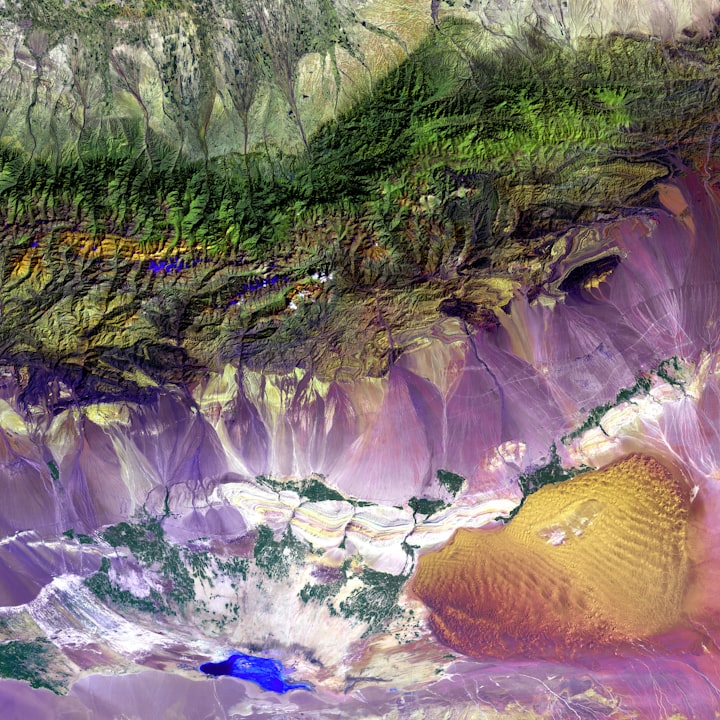The Garden of the Solar System
The challenges to protecting the 'Garden of the Solar System
I. Introduction
The "Garden of the Solar System" is a term that refers to the Earth as a unique and special place in the universe, due to the unique conditions that allow life to thrive on our planet. Understanding these conditions is important because they help us appreciate the rare and fragile nature of life on Earth, and the need to preserve and protect the conditions that make it possible.
The Earth is a small, rocky planet located in the habitable zone of the solar system, where the temperature is just right for water to exist in a liquid state. Water is essential for life as we know it, and the presence of liquid water on Earth has allowed for the development of a wide range of ecosystems, from the frozen tundra to the steamy rainforests. The Earth also has a protective atmosphere that shields us from harmful cosmic radiation and meteor impacts, and a stable temperature range that allows for a diverse array of life to exist.
In short, the Earth is a true rarity in the universe, and we should take care to preserve and protect the conditions that make it a "Garden of the Solar System."
II. Physical characteristics of Earth that contribute to its ability to support life
Liquid water
One of the most important physical characteristics of the Earth that contributes to its ability to support life is the presence of liquid water. Water is a universal solvent, meaning it is capable of dissolving a wide variety of substances, making it an essential component of many chemical reactions that are necessary for life. Water is also necessary for the maintenance of homeostasis in living organisms, meaning it helps to regulate body temperature, hydration, and other important processes.
The presence of liquid water on Earth is made possible by the planet's location in the habitable zone of the solar system, where the temperature is just right for water to exist in a liquid state. This narrow habitable zone is a result of the Earth's distance from the Sun, which is not too close (where the water would boil away) and not too far (where the water would freeze).
In addition to its role in supporting life, water also plays a major role in shaping the Earth's surface, through processes such as erosion and the formation of lakes, rivers, and oceans. The Earth's water cycle, which involves the evaporation of water from the oceans and the precipitation of water back onto the land, also plays a critical role in regulating the Earth's climate.
Protective atmosphere:
The Earth's atmosphere is composed of a mixture of gases, including oxygen, nitrogen, and carbon dioxide, which protect life on Earth from harmful cosmic radiation and meteor impacts. The atmosphere also acts as a greenhouse, trapping heat from the Sun and helping to regulate the Earth's temperature.
Stable temperature range:
The Earth's temperature is relatively stable, thanks to the planet's distance from the Sun and the presence of the atmosphere. This allows for a wide range of temperatures and climates to exist on the planet, from frozen tundra to steamy rainforests.
Right distance from the Sun:
The Earth is located in the wearable zone of the solar system, where the temperature is just right for water to exist in a liquid state. This narrow wearable zone is a result of the Earth's distance from the Sun, which is not too close (where the water would boil away) and not too far (where the water would freeze).
Plate tectonics:
The Earth's lithosphere (the outer solid layer of the planet, made up of the crust and upper mantle) is broken into a number of plates that move slowly over time. This process, known as plate tectonics, helps to regulate the Earth's climate, recycle nutrients, and create the conditions necessary for life.
Magnetic field:
The Earth has a magnetic field that helps to protect the planet and its atmosphere from the solar wind, a stream of charged particles emanating from the Sun. The Earth's magnetic field is created by the movement of molten iron in the planet's core, and it helps to deflect harmful solar radiation and charged particles.
III. The role of Earth's environment in supporting diverse forms of life
The Earth's environment plays a critical role in supporting diverse forms of life. The planet is home to a wide range of ecosystems, each with its own unique set of conditions that support specific forms of life. These ecosystems include forests, grasslands, deserts, oceans, and more, and they provide the necessary resources and habitat for a vast array of plant and animal species.
The presence of a wide range of ecosystems on Earth is made possible by the planet's physical characteristics, such as its stable temperature range, the presence of liquid water, and the protective atmosphere. These characteristics allow for the development of a wide range of climates and habitats, from the frozen tundra to the steamy rainforests.
Biodiversity, or the variety of life on Earth, is an important aspect of the Earth's environment. Biodiversity is important because it helps to maintain the health and balance of ecosystems, and it provides many benefits to humans, such as the production of oxygen, the pollination of crops, and the purification of water. The Earth's biodiversity is under threat from a variety of factors, including habitat destruction, pollution, and climate change, and it is important to take steps to protect and preserve it.
IV. Challenges to preserving the "Garden of the Solar System"
There are several challenges to preserving the "Garden of the Solar System," including:
Climate change:
The Earth's climate is changing due to human activity, such as the burning of fossil fuels and deforestation. These activities release greenhouse gases into the atmosphere, which trap heat and cause the Earth's temperature to rise. Climate change is a major threat to the Earth's environment, as it can lead to more frequent and severe natural disasters, such as heatwaves, droughts, and hurricanes. It can also cause the loss of biodiversity, as some species may not be able to adapt to the changing conditions.
Environmental degradation:
The Earth's environment is also threatened by a range of other human activities, such as pollution, habitat destruction, and overconsumption of natural resources. These activities can have a negative impact on the planet's ecosystems, leading to the loss of biodiversity and the degradation of natural habitats.
Loss of biodiversity:
The loss of biodiversity, or the variety of life on Earth, is a major challenge to preserving the "Garden of the Solar System." Biodiversity is important because it helps to maintain the health and balance of ecosystems, and it provides many benefits to humans. The loss of biodiversity can have serious consequences for the Earth's environment, as it can lead to the disruption of ecosystems and the decline of important species.
V. Conclusion
In conclusion, the Earth is a truly special and unique place in the universe, due to the unique conditions that allow life to thrive on our planet. These conditions include the presence of liquid water, a protective atmosphere, a stable temperature range, and the right distance from the Sun. These characteristics have allowed for the development of a wide range of ecosystems and a diverse array of plant and animal life on Earth.
It is important to protect and preserve these conditions for future generations, as they are essential for the continued survival and flourishing of life on Earth. The challenges to preserving the "Garden of the Solar System" include climate change, environmental degradation, and the loss of biodiversity. Taking steps to address these challenges, such as reducing our carbon footprint and protecting natural habitats, is essential for the long-term health and prosperity of the planet.






Comments
There are no comments for this story
Be the first to respond and start the conversation.